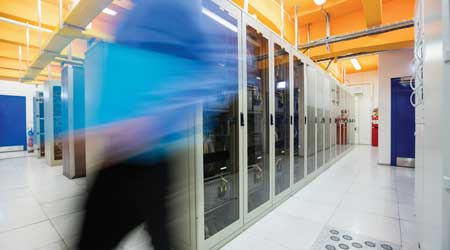Document Control Rooms Speed Incident Response in Data Centers
In an emergency, data center FMs need immediate access to key documentation. But most new data centers have inadequate room for document control.
OTHER PARTS OF THIS ARTICLEPt. 1: This Page
Critical facilities departments dedicate considerable effort to keeping electrical and cooling systems operating continuously. It is imperative facilities teams react instantly during an unexpected incident. If the team is adequately staffed and thoroughly trained on site-specific procedures, they may confidently and quickly resolve the incident ⎯ if they have immediate access to needed documentation. For example, an incident involving multiple tripped breakers in the same power path would necessitate immediate access to the facility’s most recent short circuit coordination study. A sudden break in a water line would require a review of the piping schematics in order to quickly locate the closest valve.
Regrettably, the majority of new critical facilities are provided inadequate room for document control. Documents and records are consequently kept in multiple rooms, wherever space can be found, without a document directory. Management of critical systems documentation is rarely assigned to an individual owner. These factors mean unnecessary time is lost searching for needed documents, resulting in extended outages.
A few leading data centers, including enterprise, colocation, and hyperscale data centers, have been built with dedicated document control rooms in order to enable optimal response time during incident response. For facility managers who are involved in designing a new critical facility or intend on creating a document control room within an existing building, the considerations and recommendations outlined below should be beneficial.
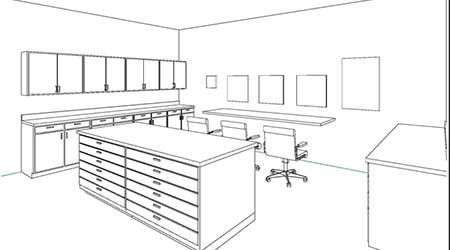
Key planning components include:
- Central location for quick access from office, infrastructure, and computer rooms.
- Single room with adequate space (at least 15 feet by 18 feet).
- Isolated from other spaces (floor to ceiling walls).
- Used as library, planning room, and incident command center only.
- Accessible only to facilities team.
- Dedicated UPS circuit.
Furnishings for a functional document control room consist of flat surfaces for spreading out drawings and documents, as well as placing printers, scanners, copiers, plotters, building automation system keyboards, weather scanners, and radios. Furniture should include shelves or cabinets, file cabinets, and at least two sets of flat drawing files, in addition to two or three chairs and work surfaces. Essential wall-mounted features are white boards for troubleshooting and planning, BAS/emergency power management system monitors, an emergency call list, an emergency action plan, and an escalation list.
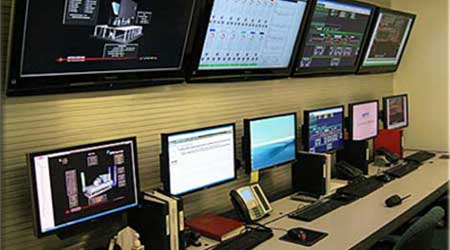
Flat drawing files should include comprehensive sets of original record drawings; project drawings; current as-built drawings; and one-line diagrams. Each of these should be filed in a separate section with clear labels for quick access. Placing two sets of flat files in the center of the room will create an effective surface for spreading drawings out for review.
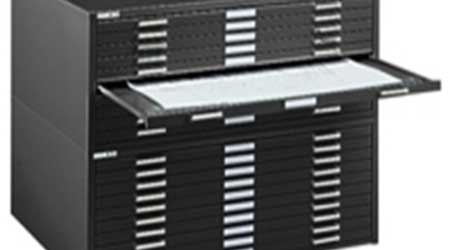
Shelves or wall-mounted cabinets must be adequate to contain current versions of the following items:
- Orientation manual.
- Basis of design (site-specific design concepts).
- Operations and maintenance (O&M) manuals.
- Commissioning records.
- Parts catalogues.
- Master binders of emergency and system transfer procedures.
- Site-specific training program binders.
- Engineering studies.
- Safety data sheets (SDS) also known as materials safety data sheets (MSDS).
- Lock-out/tag-out documentation.
- Spill prevention, control, and countermeasure policy.
- Confined space policy.
- Code manuals.
- BAS set points manual.
- Monthly reports binder.
- Test and balance reports binder.
Similarly, sufficient file cabinets should have drawers organized alphabetically to provide quick access to current versions of equipment service records and warranties; daily inspection records; completed preventive maintenance records; load test data; generator run logs; battery test reports; PDU and RPP panel schedules; thermal scan and vibration analyses reports; and fire equipment inspection records.
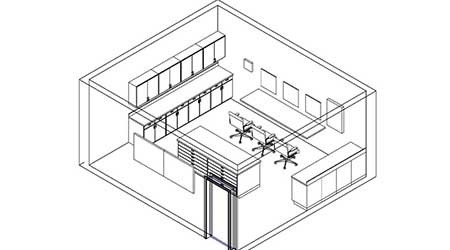
Once a dedicated room with these basic provisions has been provided, just a few methods are required to ensure the documentation control room serves its intended purpose over the life of the facility. The most important is the assignment of one facilities team member as the owner of the document control room. This individual’s written annual objectives must include prioritized, measurable goals related to the room’s functionality. It will be their responsibility to consistently have drawings and documents updated when infrastructure system configuration changes are made. Conducting a daily inspection of the room to make sure all is in order is a minor but important task. The requirement for all team members to use a check-out log when removing documents from the room is a necessity and must be enforced by management. Finally, the document control room owner should annually review all documents and remove outdated items to archival storage, destruction, or disposal.
When planning a document control room for a new critical facility, the building owner’s representative should ensure that the key planning components outlined above are incorporated during the initial design meeting. At subsequent design reviews, the owner’s rep must verify that all have been addressed. Once construction of the room is complete, the designated owner of the document control room may assist as furnishings are installed. When the general contractor, commissioning agent, and engineer of record deliver documents and drawings to the building owner’s rep, the designated room owner should be provided copies for immediate filing.
Acquisition of space is the greatest challenge for those who wish to create a document control room in an existing facility. Once space is secured, funding for minor construction and the purchase of furnishings can be justified by the promise of faster incident resolution. Typically, the same individual tasked with maintaining the document control room will be assigned as project manager to outfit the room and orchestrate migration of documents and drawings from existing spaces. While setting up the new room, the project manager will inevitably identify documents that need to be created or acquired, as well as others that must be updated. The department manager should allocate time for the document control room owner to coordinate and complete this effort during the initial months after move in.
Whether creating a document control room in a new or existing critical facility, remember to leverage the fact that other leading data centers are doing this as you seek dedicated space and funding.
David Boston (David.Boston@bgis.com) serves as director, U.S. global critical environments team, Brookfield Global Integrated Solutions, where he provides assessments, staff plans, and the development of procedures and training programs for critical facility clients.
Related Topics:








